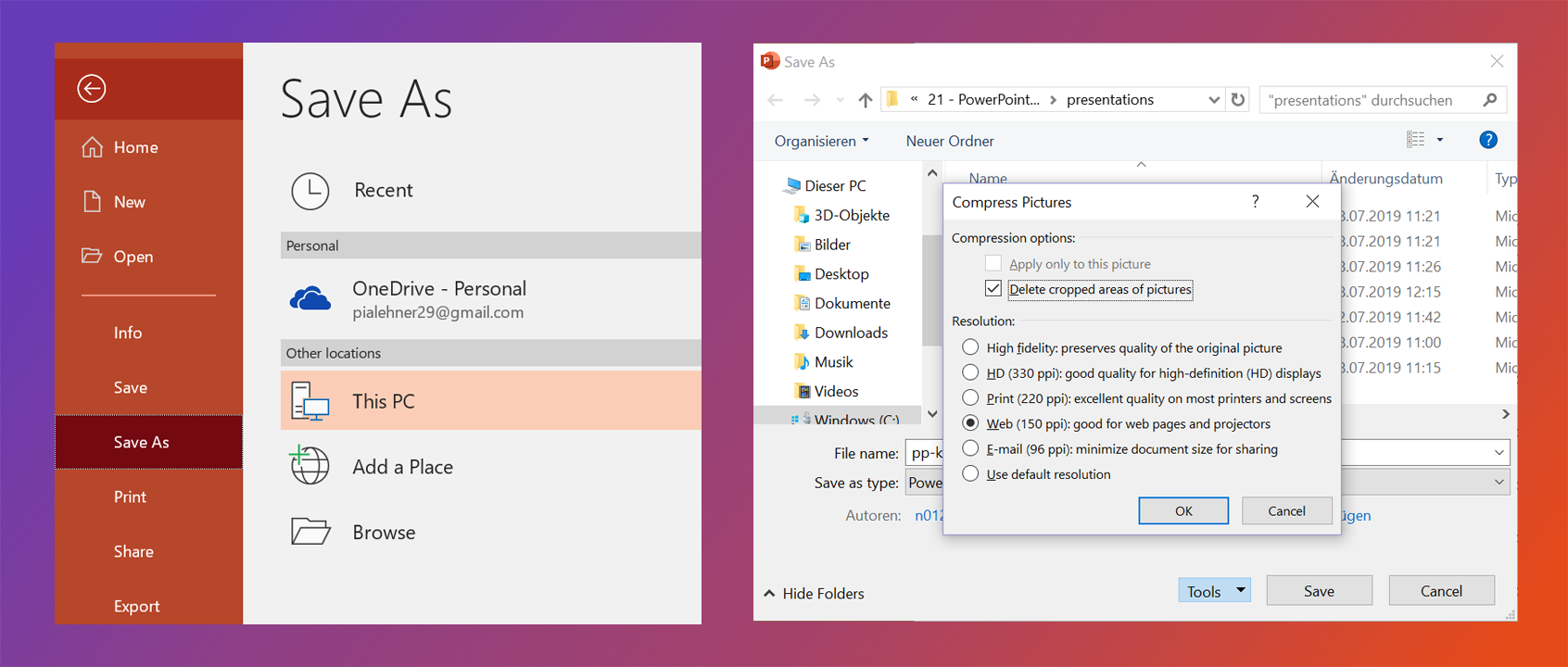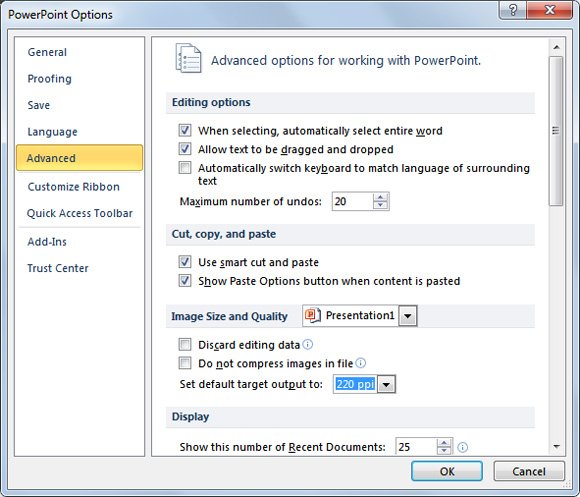

PNG or JPEG) allow additional metadata to be embedded in the image file. Previous edits are not available through PowerPoint’s® user interface anyway, but forensic tools may be able to extract some historical information from a ‘fast saved’ file. NXPowerLite removes this 'fast save' information, preserving only the most recent edit. This has the effect that in some cases, deleted or edited objects will not be removed from the PowerPoint® file when changes are saved. PowerPoint® 2003 and earlier have the option to enable 'Fast saves'. Wherever possible, NXPowerLite will convert such images to PNG or JPEG format depending on which is smaller. PPTX files often contain images in WMF (‘Windows Metafile’) and EMF (‘Enhanced Metafile’) formats, which are suitable for vector graphics but are highly inefficient for representing bitmapped images (e.g.

The default setting (7) will result in a barely noticeable loss of quality, even at 100% zoom. NXPowerLite can also apply additional compression to images that are already in the JPEG format. NXPowerLite can convert certain types of image to JPEG format, which offers high compression levels but can affect image quality. For example, if NXPowerLite is configured to optimize PowerPoint® files for viewing at 1600x1200 pixels (the default setting), any images which fill an entire slide and are larger than 1600x1200 pixels will be scaled down to 1600x1200 pixels (sufficient for nearly all viewing and printing purposes). NXPowerLite can scale down such images by a configurable amount. For example, a photograph taken by a digital camera might contain ten million or more pixels, but most of this detail will not be visible unless ‘zoom’ controls are used. Images are often inserted into Microsoft® PowerPoint presentations at much larger sizes than necessary. NXPowerLite can selectively optimize each of these elements within the files to create leaner, smaller presentations. Microsoft PowerPoint files contain an abundance of content that can be optimized from oversized images and old fast save information to hidden data in embedded objects.


 0 kommentar(er)
0 kommentar(er)
